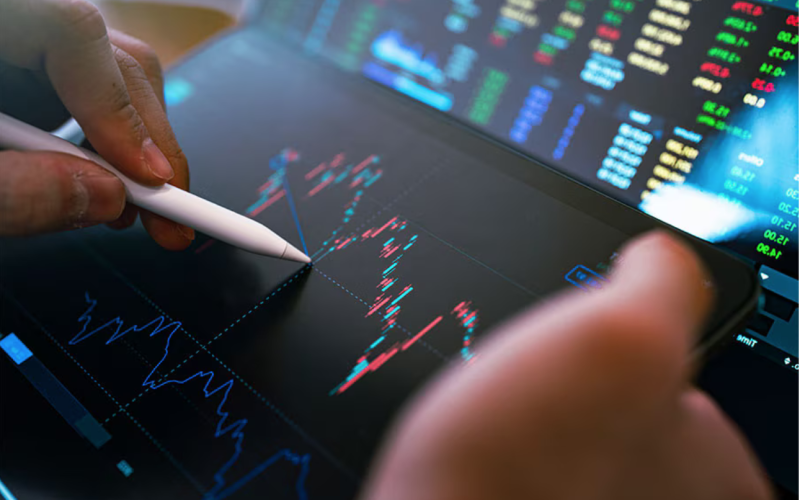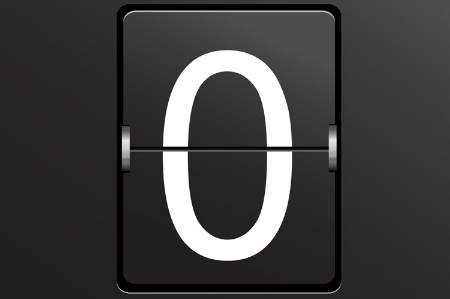by Liz Ann Sonders, Chief Investment Strategist, Kevin Gordon, Charles Schwab & Company Ltd.
Between adjustments in Fed policy and a coming presidential election, it's going to be an emotional year, but historical data show staying invested is the best course for investors.

Source: Charles Schwab, Bloomberg, Federal Reserve, 1929-3/15/2024.
*Assumes terminal hike for current rate hike cycle occurred on 7/26/2023. Green shading represents best S&P 500 performance and red shading represents worst S&P 500 performance. Indexes are unmanaged, do not incur management fees, costs and expenses and cannot be invested in directly. Past performance does not guarantee future results.
Many assume that once the Fed has finished hiking rates in a cycle, it's smooth sailing for stocks. But history shows that in the six-month period following the final hike in a cycle, the S&P 500 was up only 36% of the time, had average and median returns in negative territory; but importantly, showed a range from -18% to +20%. The odds improved a year after the final hike, but only jumped to 43%; and although the average return bumped into positive territory, the range was enormous, from -29% to +32%.
Moving to the middle column in the table above, the range of days during which the Fed was in pause mode was as short as 58 days in the late 1950s and as long as 874 days in the early 1980s. As such, an average of 231 days tells us nothing (especially given that only one historical range even had a 2-handle on it). More remarkable is the following column, showing the S&P 500's performance during the pause period. The average and median showed flattish returns, but that's largely useless information. The percentage positive was exactly 50%, meaning there were seven up moves and seven down moves, with a massive range from -27% to +26%.
Cyclicals vs. defensives
As shown in the chart below, courtesy of our friends at Ned Davis Research, broad cyclicals (Energy, Materials, Industrials, Consumer Discretionary, Financials, Technology, and Communication Services) tended to outperform defensives (Consumer Staples, Health Care, Utilities, and Telecom Services) in slow cutting cycles—shown via the black line. Conversely, the opposite occurred in fast cutting cycles, as cyclicals didn't start doing well until about nine months after the first cut—shown via the orange line.
Slow cutting favors cyclicals

Source: ©Copyright 2024 Ned Davis Research, Inc.
Further distribution prohibited without prior permission. All Rights Reserved. See NDR Disclaimer at www.ndr.com/copyright.html. For data vendor disclaimers refer to www.ndr.com/vendorinfo/. 1974-3/18/2024. The chart and embedded tables show broad cyclical and defensive sector performance around first Fed rate cuts. Y-axis is indexed to 100 at start of first rate cut. An index number is a figure reflecting price or quantity compared with a base value. The base value always has an index number of 100. The index number is then expressed as 100 times the ratio to the base value. A fast cycle is one in which the Fed cuts rates at least five times a year. A slow cycle has less than five cuts within a year. Indexes are unmanaged, do not incur management fees, costs and expenses and cannot be invested in directly. Past performance does not guarantee future results.
We continue to remind investors that fast cutting cycles are often due to recessions. The three most recent Fed cutting cycles—which started in 2019, 2007, and 2001—were all fast in nature and followed by both bear markets and recessions. Barring any major deterioration in the economy (especially on the services side), we continue to think the market can digest the start of the cutting cycle, especially if it's not accompanied by a significant deterioration in economic growth.
Election
The charts below are courtesy of Ned Davis Research and use the Dow Jones Industrial Average vs. the S&P 500 because the former has a longer history. Starting with presidential elections, the stock market has performed slightly better under Democratic presidents.
Dow vs. presidential party

Source: ©Copyright 2024 Ned Davis Research, Inc.
Further distribution prohibited without prior permission. All Rights Reserved. See NDR Disclaimer at www.ndr.com/copyright.html. For data vendor disclaimers refer to www.ndr.com/vendorinfo/. 1901-2/29/2024. The chart shows the Dow Jones Industrial Average real (inflation-adjusted) performance. Indexes are unmanaged, do not incur management fees, costs and expenses and cannot be invested in directly. Past performance does not guarantee future results.
Of course, there is also Congress to analyze when it comes to political party and market performance. As shown below, the best performance has come with Republican control of Congress, with the worst coming when Congress was split between the two parties.
Dow vs. congressional party

Source: ©Copyright 2024 Ned Davis Research, Inc.
Further distribution prohibited without prior permission. All Rights Reserved. See NDR Disclaimer at www.ndr.com/copyright.html. For data vendor disclaimers refer to www.ndr.com/vendorinfo/. 1901-2/29/2024. The chart shows the Dow Jones Industrial Average real (inflation-adjusted) performance. Indexes are unmanaged, do not incur management fees, costs and expenses and cannot be invested in directly. Past performance does not guarantee future results.
Combining the two, the chart below looks at the six possible combinations in terms of the presidential and congressional party breakdown. The best performance has occurred when there was a Democrat in the White House and a split Congress (the current configuration), but full Republican control a close second. The two worst (both with negative annualized returns) outcomes historically were under Republican presidents and either a split Congress or a Democratically controlled Congress. As an aside, the two most common outcomes (last column in the table below) were when there was full party control, a very unlikely outcome this year.
Dow vs. party combinations

Source: ©Copyright 2024 Ned Davis Research, Inc.
Further distribution prohibited without prior permission. All Rights Reserved. See NDR Disclaimer at www.ndr.com/copyright.html. For data vendor disclaimers refer to www.ndr.com/vendorinfo/. 1901-2/29/2024. The chart shows the Dow Jones Industrial Average real (inflation-adjusted) performance. Indexes are unmanaged, do not incur management fees, costs and expenses and cannot be invested in directly. Past performance does not guarantee future results.
The real moral of the story
Stay invested

Source: Schwab Center for Financial Research with data provided by Morningstar, Inc.
The above chart shows what a hypothetical portfolio value would be if an investor invested $10,000 in a portfolio that tracks the Ibbotson U.S. Large Stock Index on 1/1/1961 under three different scenarios. The first two scenarios are what would occur if an investor only invested when one particular party was president. The third scenario is what would occur if an investor had stayed invested throughout the entire period. Returns include reinvestment of dividends and interest. The example is hypothetical and provided for illustrative purposes only. It is not intended to represent a specific investment product. Indexes are unmanaged, do not incur management fees, costs, and expenses and cannot be invested indirectly. Past performance is no guarantee of future results.
In sum
Copyright © Charles Schwab & Company Ltd.














